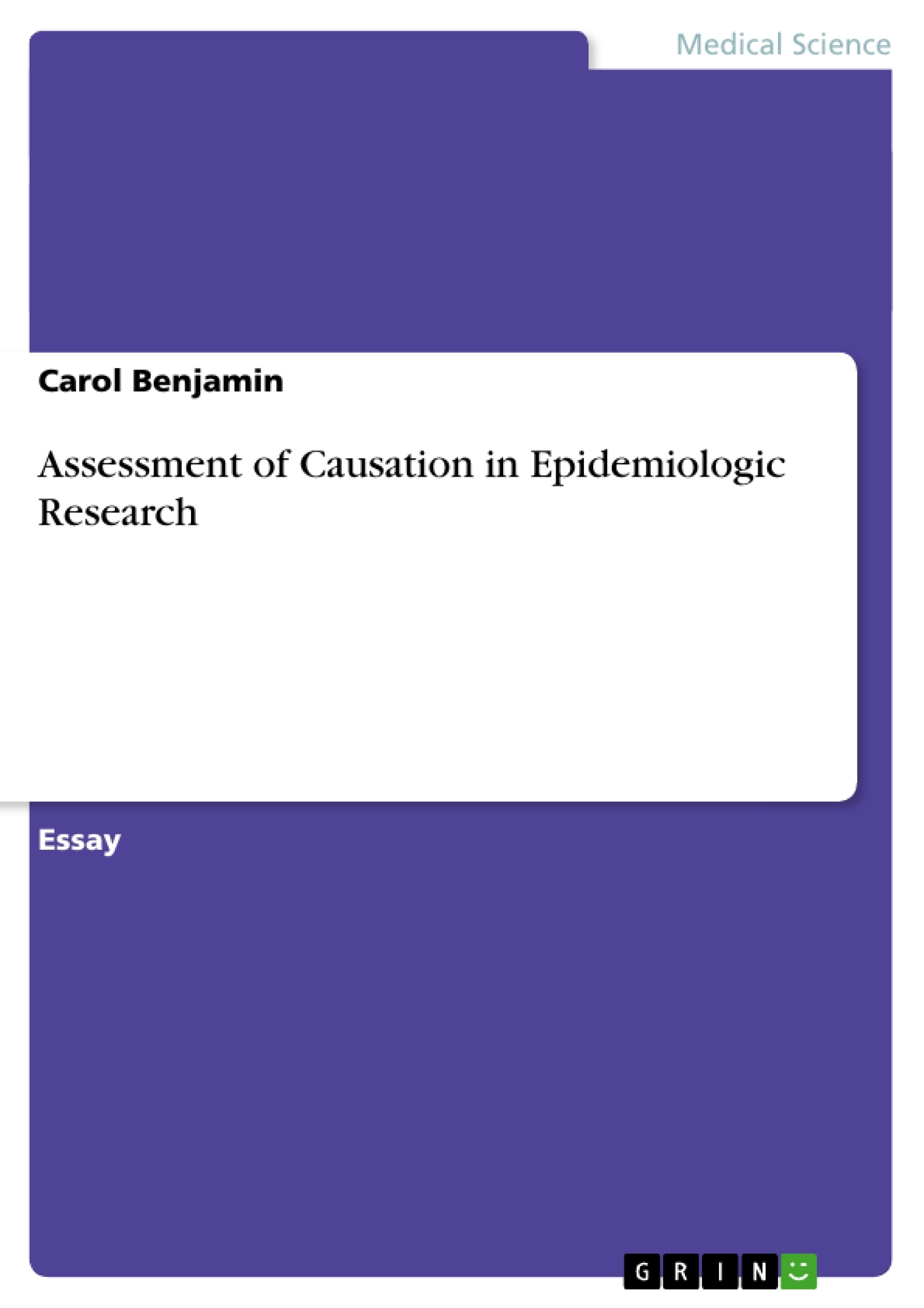Excerpt
Abstract
In this assignment I assessed the relationship between soy consumption and breast cancer which has been studied by Sacks et al (2006), Messina & Loprinzi (2001), Wu et al (2008), and Trock et al (2006). I used the Bradford Hill criteria and assess whether soy has an inverse causal relationship with breast cancer.
In the article on “Emerging Themes in Epidemiology” Hoffler (2005) explained that Sir Austin Bradford (1897-1991), who was an outstanding pioneer in medical statistics and epidemiology wrote a paper entitled, “The environment and disease: Association or causation” which had an enormous impact on epidemiologists and medical researchers. Hill provided nine considerations for assessing whether an observed association involved a causal component or not. The relationship between soy consumption and breast cancer will be assessed using the Bradford Hill criteria shown below.
1. Strength of Association
This association is related to the relative risk and odds ratio whereby there can be a weak, moderate or strong association. Article by Trock et al. (2006) proposed that high intake of soy foods has been proposed to contribute to the low breast cancer risk in Asian countries. However, results of epidemiologic studies of this association are highly variable, and experimental data suggest that soy constituents can be estrogenic and potentially risk enhancing. A meta-analysis of 18 epidemiologic studies was completed and examined soy exposure and breast cancer risk. The authors demonstrated that in a pooled analysis, among all women, high soy intake was modestly associated with reduced breast cancer risk. Odds ratio =0.86, 95% confidence interval = 0.75 to 0.99. The association was not statistically significant among women in Asian countries. The Odds Ratio =0.89, 95% confidence interval = 0.71 to 1.12. Trock and his colleagues argue that among the 10 studies that stratified by menopausal status the inverse association between soy exposure and breast cancer risk was somewhat stronger in premenopausal women. Odds Ratio = 0.70, 95% confidence interval = 0.58 to 0.85) than in post menopausal women. Odds ratio = 0.77, 95% confidence interval = 0.60 to 0.98. Trock and colleague concluded that soy intake may be associated with a small reduction in breast cancer risk.
2. Consistency of Association
Weed (2000) explained consistency as the extent to which the association is observed in different circumstances, by different investigators, using different study design and in different locations. The relationship between soy consumption is consistent among a large number of studies. From the studies that I reviewed they all showed that there is a relationship between soy exposure and breast cancer. Messina and Loprinzi’s (2001) article was written to highlight studies that pertain mostly to the controversy of the relationship to soy exposure and breast cancer. Although Weed reviewed many studies that reveal a relationship between soy exposure and breast cancer, I will only mention a few of the studies in this assignment. The author explains that several studies examined the effects of different soy products on the development of chemically induced mammary cancer in adult animals. The data are somewhat inconsistent but generally show that in comparison with control diets, the substitution of soy protein for other protein typically found in a standard laboratory diet modestly reduced (25-50%) tumor incidence. Weed mentioned studies that were completed by Barnes et al. (1990), Hakkak et al (2000) and Ohta et al. (2000). Weed also reviewed studies completed by Cohen et al. (2000) and Hsueh (1992) which argued that soy did not show protective effects on breast cancer. Weed concluded that there is a lack of any convincing information to substantiate either of two extreme and opposing claims which states that soy is protective against breast cancer and that soy is harmful for women with a history of or at high risk for breast cancer. Although the article shows that there are opposing views, all the articles that were reviewed showed that there is a relationship between soy exposure and breast cancer. As a result there is a consistency of relations.
[...]
- Quote paper
- Carol Benjamin (Author), 2009, Assessment of Causation in Epidemiologic Research, Munich, GRIN Verlag, https://www.grin.com/document/265470
Publish now - it's free






















Comments